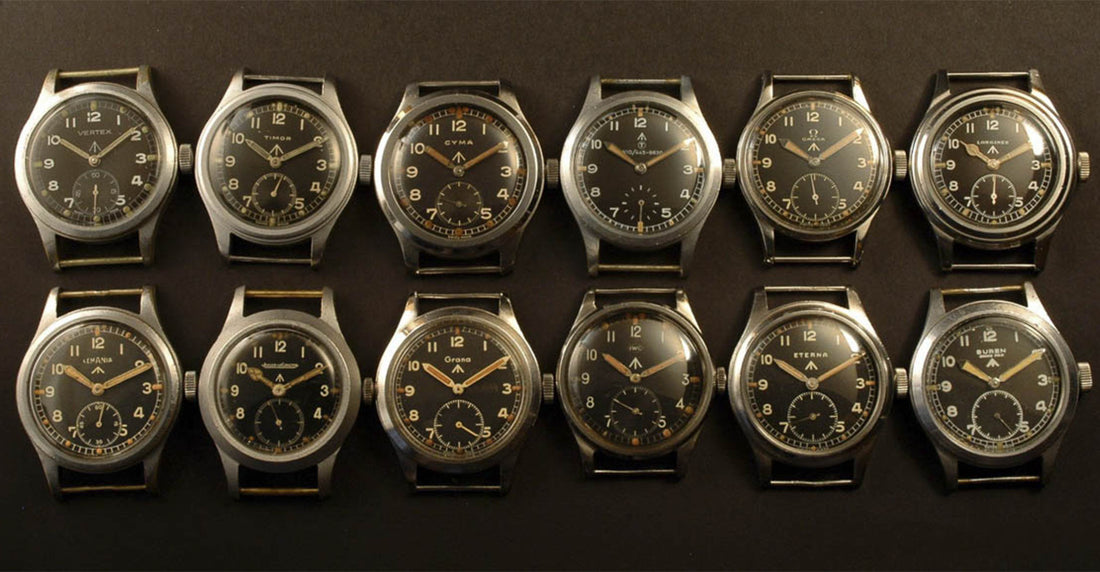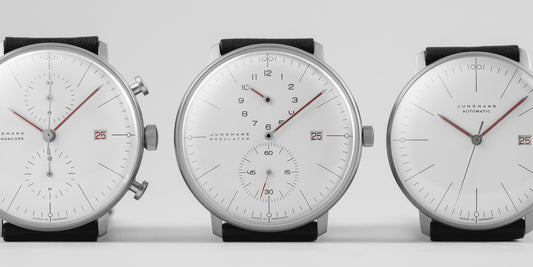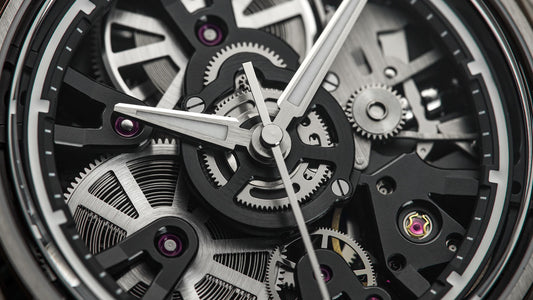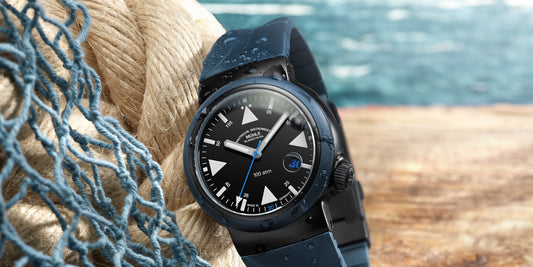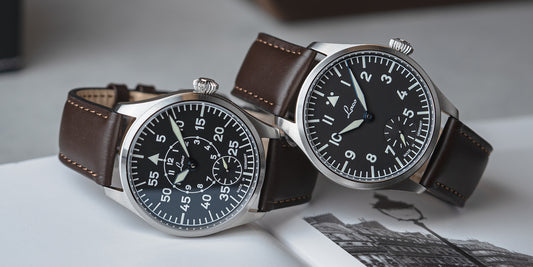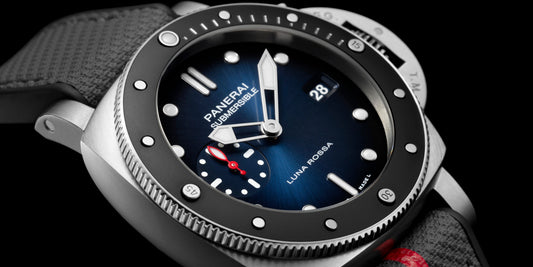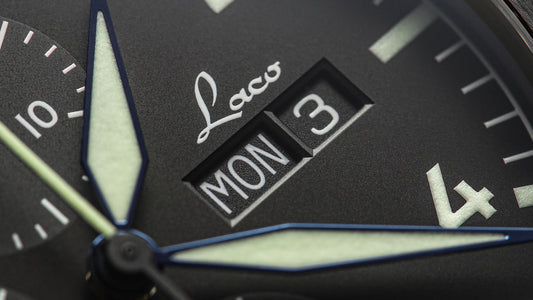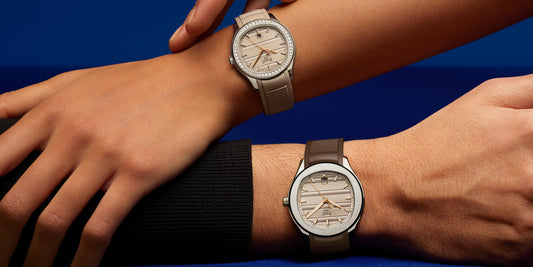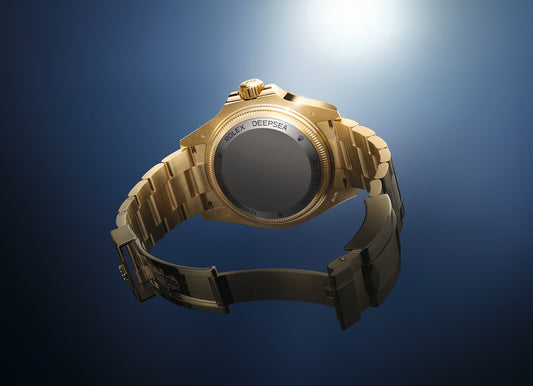A brief history from the trenches of WW1 to the Formex Field
Bespoke Outdoor & Survival watches are big business today. Leading manufacturers are taking accepted Field Watch designs and shaking them up to create contemporary models which fuel this relatively new genre. Take for example the 2022 Luminox Bear Grylls Outdoor Explorer range. They are not close to what you could call a classic field watch, yet they arguably tick enough boxes to technically classify as one. However, no matter how modern the creation, the origin of these watches, and the rules which still govern their fundamental design, stem from a much earlier era, and we cannot analyse the evolution of the field watch without looking in detail at how it all began - the compelling need for a military wristwatch.
The first field watches
By the time the 19th Century clicked over to the 20th, professional soldiers had learned the value of accurate watches. Attacks could be co-ordinated and therefore improved. Squads could move at pre-ordained times and timed artillery could be fired into advance positions, priming for ground troops, with the sure knowledge that your own forces were not in the target zone.
Most watches deployed in conflicts up to and including WW1 were pocket watches. Many of these were privately owned and they were not robust or milspec in the sense we understand today. Clear operational legibility was still 30 years away. No matter how accurate or well-built pocket watches were, they had a single drawback, you needed a free hand to look at them. Bear in mind we are considering an era where the battlefield was changing beyond recognition. Warfare was now hugely mechanised and operating a rifle while simultaneously fumbling for a pocket watch had obvious drawbacks.
As WW1 ploughed on, the advantages of a wristwatch soon became apparent and any comparisons to “ladies" watches, and consequent reticence to wear, was quickly forgotten. In every measurable way the location of a military time piece on your wrist was much more practical than a pocket watch. By 1916 a popular British soldier's equipment handbook listed a luminous wristwatch with shatterproof glass as essential officer equipment along with binoculars and a pistol.
Nevertheless, it would take the world descending into war again for watches which we identify as modern field watches to appear. Mid WW2, all sides of the conflict, be they Allied or Axis, came to the same military conclusion; that they had to create a reliable, standard issue, wristwatch which was cost effective, highly legible, and resistant to the elements.

Record WWW Dirty Dozen British Military issued watch c.1945 - Image credit WatchGecko.
From the Allied side inception can be traced back to a 1940 US military watch technical specification titled 94-27834B (which later evolved into FSSC 88-W-800). This specification set new standards for military field watches ensuring they could take the harsh knocks associated with the battlefield and deliver operational accuracy. Qualifying models, designated an A-11, had to be equipped with a hand wound 15-jewel hacking movement. The dial was required to have a track divided into 10-minute segments, bold numerals and a clear second hand. Elgin, Bulova, and Waltham produced models under the new spec, all of which went immediately into military service. Hamilton also built a watch under the later FSSC 88-W-800 spec with superior luminescence and an 18-jewel movement.
In late WW2 the British military were also particularly well served with watches with many international companies, including heavy weights such as Omega, IWC, and JLC, making military watches to strict criteria. Commissioned under British War Office Specification R.S./Prov/4373A "Watches, Wristlet, Waterproof" (W.W.W.), these hand wound 35mm watches were not dissimilar to their US counterparts. They had a simple, highly legible, black dial with luminous hands and indices, however they collectively opted for a small second sub dial at the 6 mark rather than a full length second hand. Today these original UK military watches hail under the title of The Dirty Dozen and are hugely collectible. If you are lucky enough to own one, they still make an outstanding field watch! The most sought-after piece is the elusive Grana of which only an estimated 1000 (ish) units were produced. In October 2020 a good condition Grana sold for £18,000 at Thomas Miller Auctioneers in Newcastle-upon-Tyne. A good set of the entire Dirty Dozen range sold for over £36,000.

A complete collection of the Dirty Dozen field watches- Image credit WatchGecko.
German forces went through a parallel evolution process with good military watches being made by companies such as Phenix which looked like a hybrid of the UK and US models. What works well for one soldier will normally work well for another. A more unique creation from the German war machine, specifically the Luftwaffe, was the now iconic Flieger designs from Laco. Stemming from a requirement for observation watches under military specification reference FL 23883, these large 55mm wrist watches were destined for navigators on larger aircrafts. Smaller 39-42mm modern derivates of these watches make excellent field watches due to their superior legibility and we explored their alternate tool-use in February of this year.
From a design perspective, military watches really became the field watches we know today in post-WW2 conflicts. During the Vietnam era Hamilton produced an enhanced standard issue watch which ultimately became their modern Khaki Mechanical. The late 1960s military issue watch is almost identical to their current reference H69529933 and this model has now become the quintessential field watch.
Throughout history other watches which are non-military in background have also had a strong influence on what has become the modern field watch. The Rolex Explorer Ref: 1016 is a sought-after field watch and when you look at an early 1963 model you can certainly argue that this giant of the exploration world shows considerable influence from military watches 20 years its senior.
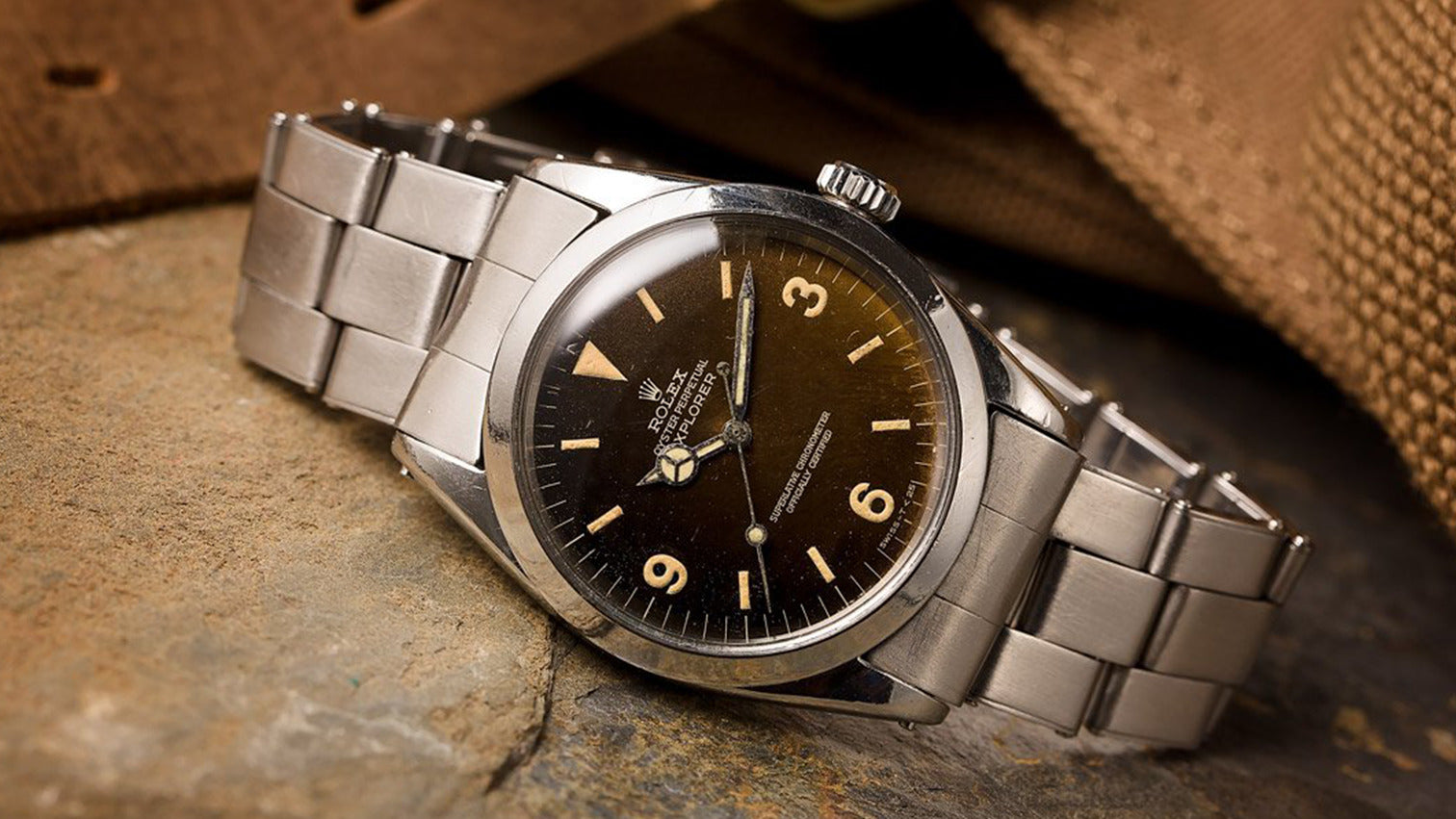
The Rolex Explorer Ref.1016 - Image credit WatchGecko.
What makes a watch a field watch?
As we have finally established some commonality of design it may be a good point to summarise what we expect from a classic field watch. A slim sub-40mm round case, most likely 36-38mm, without a rotating bezel. A clear uncomplicated dial with bold numerals and good lume. A clear second hand, either located in a sub dial or central. If central it must be long enough to reach and cover an outer minute track, clearly sub-divided into 60 units. Bold hands which stand out against the dial, equally with the minute hand reaching the outer track, making time reading unmistakable. Dial colour will most likely black, green, white, or tan. Power supply is not pre-ordained with the industry using a good spread of quartz, manual and automatic. The purists tend to lean to hand wound. All supported by a fabric strap.
Field watches sell well so you could be forgiven for thinking that consumers are comfortable with this style, and it would be easy to draw a line under the evolution of the field watch. It has, after all, become a near perfect user-friendly product; a classic style not to be messed with? Not the case; we all know the watch industry never sits still...
With the advent of new materials and the drive to move beyond what looks purely military, manufacturers have been highly creative over the last few years. The smart ones have stayed relatively true to the essential design criteria for field watches and they have managed to incorporate those specs into exciting new models which give the die-hards like the Khaki Mechanical a run for their money.
Of course, such Avant Guard design must be treated with care; it would be very easy to slip into territory where the final creation is so radical it cannot be considered a field watch. The afore mentioned Bear Grylls models are case in point. No matter how many boxes they tick, and no matter how many adventures the watch is worn on, you would struggle to categorise even the bestselling Luminox as a classic field watch. Brilliant as they may be, they have unwittingly created and transcended into the new category of Outdoor & Survival Watches.
Some manufacturers on the other hand have embraced the heritage and history of field watches, taken on board everything we have looked at here, and successfully created designs which truly pay homage to the humble field watch, successfully elevating the genre.
Modern field watches
Examples of the latest breed would be the Marloe Field Standard, or the Boldr Venture, both of which 100% tick all the classic field watch criteria yet bring a new design ethos which takes the WW2 style watch and respectfully places it to one side.
Marloe Haskell Field Standard - £745

The Marloe Haskell Standard - Image credit WatchGecko.
The Marloe Haskell Field Standard looks like it was created by nature and harks back to the design of classic old steel compasses which kept early explorers on course. It redefines the field watch with only a minimal salute to the military watches of old.
The uncluttered dial is forest green with sand tone numerals and writing. Syringe hands and a red second hand hark back to the look of a compass. Powered by a Sellita SW-215-1 manual winding mechanical movement with a recessed date at the 6-indice. The case back features a highly polished stylised compass design. If you are in the market for a high-end contemporary field watch, the Marloe Haskell Field Standard is well worth a look.
The Boldr Venture Series - from £269 to £359

The Boldr Venture Field Medic Camo Green Chronograph - Image credit WatchGecko.
- Regular price
- £299.00
- Regular price
-
- Sale price
- £299.00
- Unit price
- per
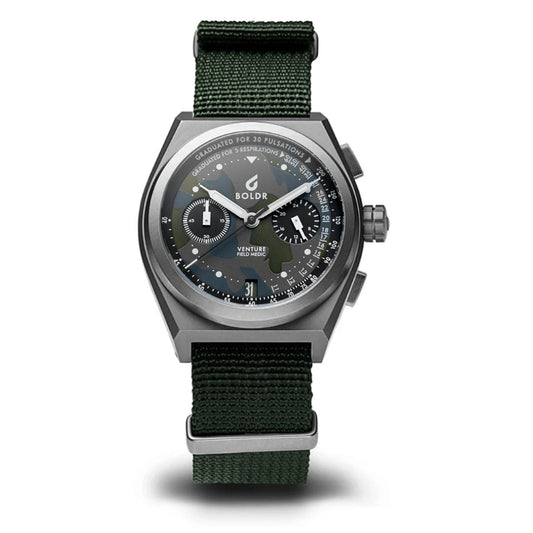
- Regular price
- £299.00
- Regular price
-
- Sale price
- £299.00
- Unit price
- per
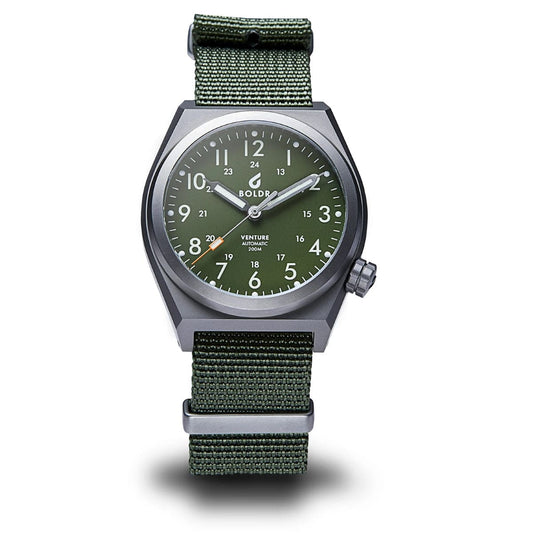
All Venture watches have a water resistance of 200m and a screw-down crown with custom embossed BOLDR logo. High legibility is further enhanced with Japan Superlume and a flat sapphire crystal lens with Anti-Reflective coating. Ventures are supplied on a military style nylon strap with custom titanium buckles. The Venture is the archetypal modern 21st Century field watch.
Hamilton Khaki Field Mechanical 38mm - £395

The Hamilton Khaki Field Mechanical - Image credit WatchGecko.
It must be included...Drawing from their well marketed military heritage Hamilton must be considered one of the kings of field watches with multiple options available. Our choice is the contemporary 38 mm Field Mechanical as this represents the purest incarnation of the breed. Its specifications are lifted straight from battle proven historical Hamilton's with a stainless-steel case, three hand display, dark dial with light numerals, triangular indexes with old radium colour Super-LumiNova and a durable nylon strap. Available with a white or black dial, we feel the white/orange H69439411 combination finds the best balance between civilian wear and military heritage. If you have money to spend then the new bronze H69459530 is truly striking.
FORMEX Field Automatic - £685 to £840
Taking the classic field watch to a whole new level is the 2022 issue Formex Field. All the boxes are ticked but this latest creation, from the most exciting of brands, is definitely not the norm.To achieve this Formex have chosen a very contemporary stencil font for the numerals and stamped them into the dial. These recessed numbers work in tandem with the curved chapter section to add a great sense of depth to the dial. As you would expect on a field watch, the hands and markers are filled with Super-LumiNova to ensure you'll be able to tell the time in low light.
The Formex Field is an incredibly durable watch. The 41mm case is made from grade 2 titanium, which has undergone a special hardening treatment. The result is that the surface hardness of the case increases from 145 Vickers to approximately 900 Vickers. In addition, the watch has a scratch-resistant sapphire crystal with an anti-reflective coating to ensure clear legibility. The watch also has a screw-down crown and a capable 150m of water resistance.
Powering the Formex Field is a Sellita SW200-1 automatic movement. The movement is a reliable choice that's used by countless brands and is easily serviced. The SW200-1 has 26 jewels and a 38-hour power reserve. The strap is a one-piece nylon strap with a hook and loop fastening, allowing you to adjust it to fit your wrist perfectly. It's definitely a field watch, but not as you know it.
In conclusion
Some people think field watches are boring. Far from it. Although they have a common design in their DNA, today we are lucky to find so many interesting watches available that it is easy to collect field watches and never duplicate a design. Everyone should have at least one in their collection and if you are fortunate enough to own two then a vintage classic model paired with one of the more contemporary modern designs really brings home the amazing story of their evolution.
